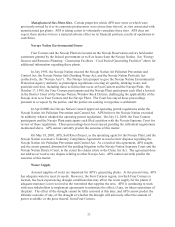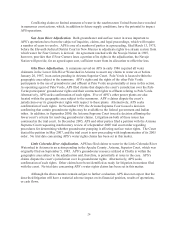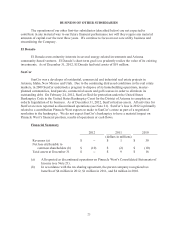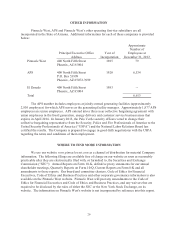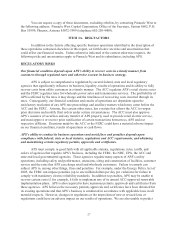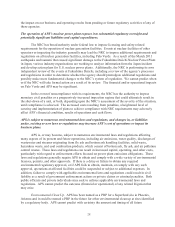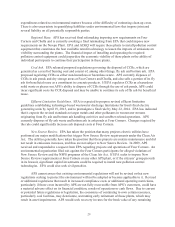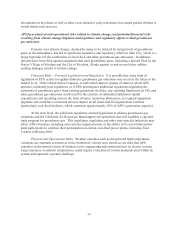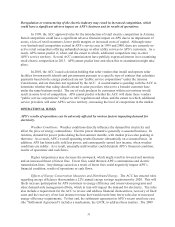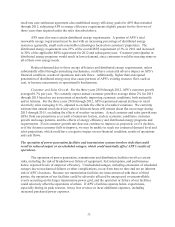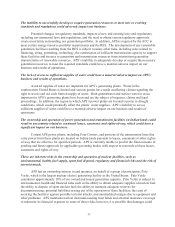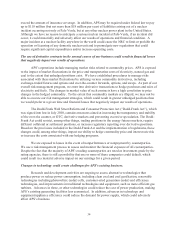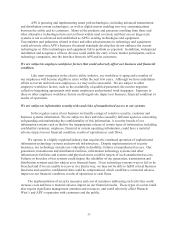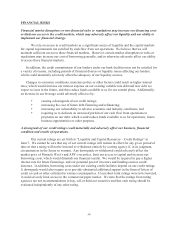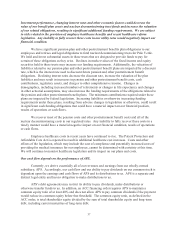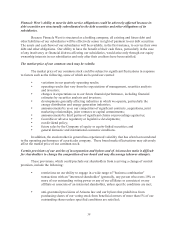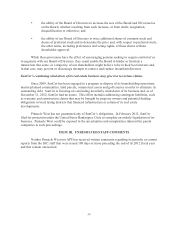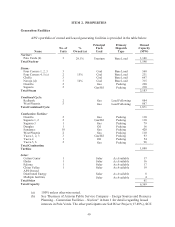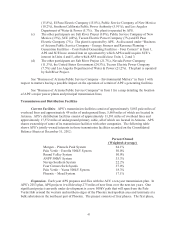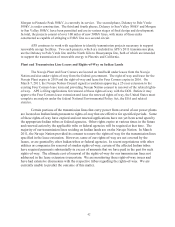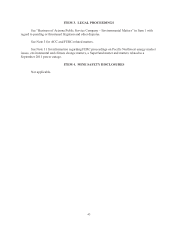APS 2012 Annual Report Download - page 57
Download and view the complete annual report
Please find page 57 of the 2012 APS annual report below. You can navigate through the pages in the report by either clicking on the pages listed below, or by using the keyword search tool below to find specific information within the annual report.33
The inability to successfully develop or acquire generation resources to meet new or evolving
standards and regulations could adversely impact our business.
Potential changes in regulatory standards, impacts of new and existing laws and regulations,
including environmental laws and regulations, and the need to obtain certain regulatory approvals
create uncertainty surrounding our generation portfolio. In addition, APS is required by the ACC to
meet certain energy resource portfolio requirements and the RES. The development of any renewable
generation facilities resulting from the RES is subject to many other risks, including risks related to
financing, siting, permitting, technology, the construction of sufficient transmission capacity to support
these facilities and stresses to generation and transmission resources from intermittent generation
characteristics of renewable resources. APS’s inability to adequately develop or acquire the necessary
generation resources to meet the required standards could have a material adverse impact on our
business and results of operations.
The lack of access to sufficient supplies of water could have a material adverse impact on APS’s
business and results of operations.
Assured supplies of water are important for APS’s generating plants. Water in the
southwestern United States is limited and various parties have made conflicting claims regarding the
right to access and use such limited supply of water. Both groundwater and surface water in areas
important to APS’s generating plants have been and are the subject of inquiries, claims and legal
proceedings. In addition, the region in which APS’s power plants are located is prone to drought
conditions, which could potentially affect the plants’ water supplies. APS’s inability to access
sufficient supplies of water could have a material adverse impact on our business and results of
operations.
The ownership and operation of power generation and transmission facilities on Indian lands could
result in uncertainty related to continued leases, easements and rights-of-way, which could have a
significant impact on our business.
Certain APS power plants, including Four Corners, and portions of the transmission lines that
carry power from these plants are located on Indian lands pursuant to leases, easements or other rights-
of-way that are effective for specified periods. APS is currently unable to predict the final outcome of
pending and future approvals by applicable governing bodies with respect to renewals of these leases,
easements and rights-of-way.
There are inherent risks in the ownership and operation of nuclear facilities, such as
environmental, health, fuel supply, spent fuel disposal, regulatory and financial risks and the risk of
terrorist attack.
APS has an ownership interest in and operates, on behalf of a group of participants, Palo
Verde, which is the largest nuclear electric generating facility in the United States. Palo Verde
constitutes approximately 18% of our owned and leased generation capacity. Palo Verde is subject to
environmental, health and financial risks such as the ability to obtain adequate supplies of nuclear fuel;
the ability to dispose of spent nuclear fuel; the ability to maintain adequate reserves for
decommissioning; potential liabilities arising out of the operation of these facilities; the costs of
securing the facilities against possible terrorist attacks; and unscheduled outages due to equipment and
other problems. APS maintains nuclear decommissioning trust funds and external insurance coverage
to minimize its financial exposure to some of these risks; however, it is possible that damages could


